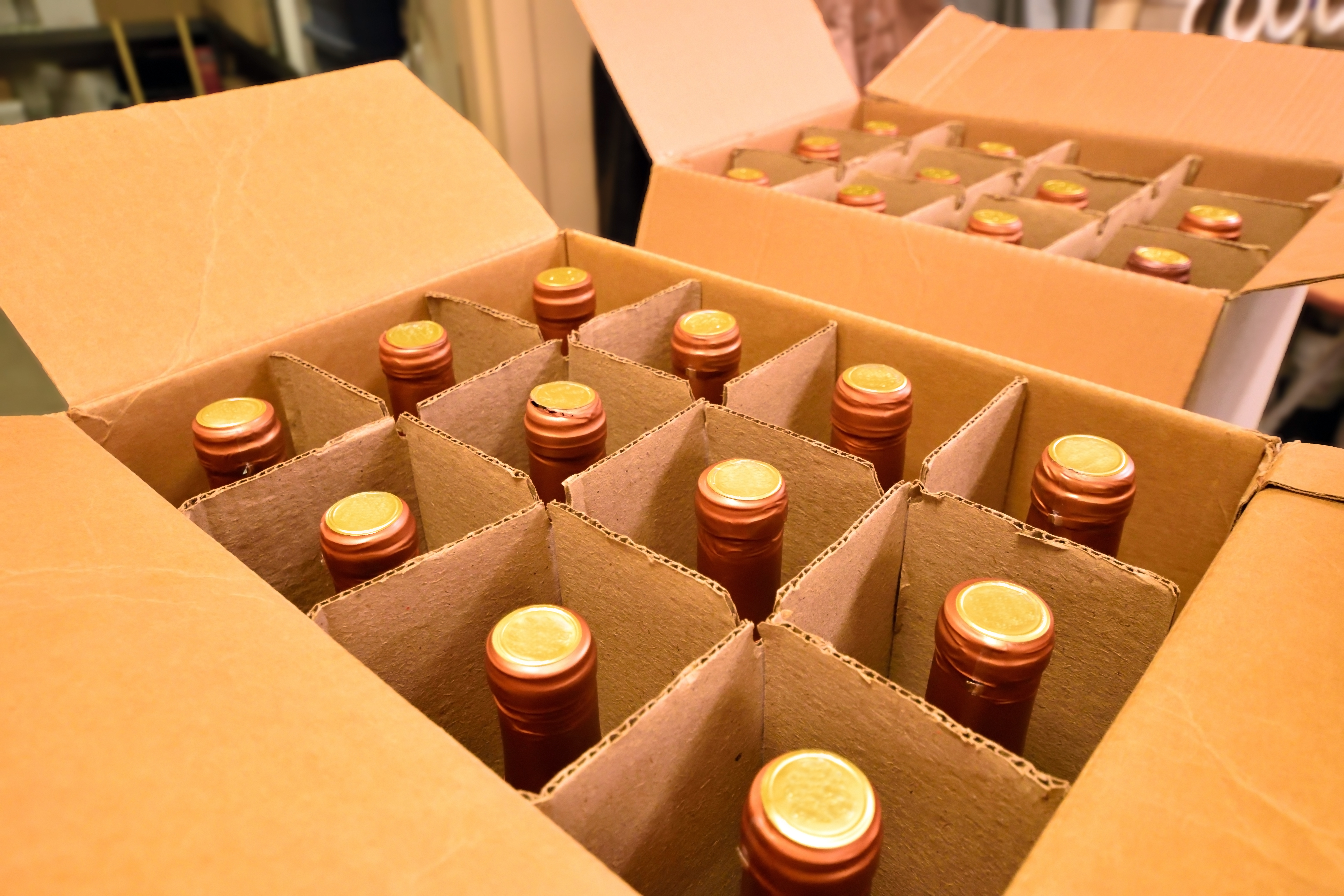When he discovered that the coronavirus lockdown was coming, my best friend stocked up with eight handles of vodka--”necessary provisions,” he called them. Well, it turns out Matt wasn’t alone in this as alcohol sales, according to Nielsen, were up 55% in the third week of March from the same week last year. There’s a lot to unpack in these numbers, so we put in the alcohol industry market research to understand and qualify this uptick, explain why we feel this surge is only temporary, and outline the ways in which these gains have been unevenly distributed.
Before we go on though, just a quick word: We are going to have some fun with this topic (doesn’t fun sound, well, fun right now?) but that does not detract from genuine concerns about addiction, recovery, and health, particularly in this time of crisis. Everybody has to decide what is best for them, and many of them (ok: us) are deciding to drink regularly through our lockdown, some more than others, and some not at all.
We don’t preach anything other than market research, good fashion, and mutual respect in this blog, so while there are legitimate issues here to discuss about alcohol, this is not the place for them. We are here for sober alcohol industry market research (with some wordplay), offering an evaluation of recent industry news based on our experience in and research about the market. And when I finish this blog, I will be making myself a nice dry gin martini (stirred--shaking bruises the gin!).
Alcohol Sales Increases Help Manufacturers Compensate for Closed Channels

Nearly every category--from ready-to-drink cocktails (+106%) to large packs of beer (+90%) and good old fashioned spirits (+75%) and wine (+42%)--has seen an increase as Americans stock up their pantries and liquor cabinets alike. New alcohol delivery services like Drizly are getting in on the boom too, seeing huge increases in orders and order volume, with sales up over 300% in March 2020.
It’s important to remember, however, that much of this retail spike in alcohol sales can be explained by consumers shifting their purchases from bars, restaurants, clubs, and other public channels to retail, c-store, grocery, and liquor channels for home consumption. For alcohol manufacturers, this is like robbing Peter to pay Paul--their retail gains come with their restaurant losses, meaning the sales spikes help to fill the gap but in no way mean that manufacturers’ business is not being impacted by the COVID-19 pandemic
As one NYC wine shop owner observed, “Our delivery business is very strong. Bars and restaurants are closed so there's no other real place to get alcohol."
Why Consumers Are Drinking More During the Coronavirus Lockdown
It is true, then, that much of this increase can be explained by shifting purchase channels, but it is nonetheless also true that many of us are drinking more in March and April than we did in February, and more than we generally did before the coronavirus. Without treading into psychology, psychiatry, or addiction therapy, we will point out that a lot of people who used to have maybe one or two drinks a night are now having three or four...or maybe more.
There are several reasons for this current increase. First, and most obviously, alcohol allows people to unwind, to dust off a bad day (of which we’ve had many lately), and numb some of the hurt. They don’t say ‘drink the pain away’ for nothing. You don’t need me to tell you, there has been a lot of pain lately--anxiety over infection, fear of job loss, isolation and depression...the list goes on and on. As a restaurant owner in Brooklyn succinctly put it, “This is a catastrophe, what we’re living through… wine is delicious, and it takes the edge off.”
We should remember, however, that addiction therapists are already seeing a spike in relapses among alcohol and drug abusers in recovery. This is understandable as people turn to self-medication during a crisis, but for those already predisposed to abuse, it is dangerous. So, yeah, a lot of us are self-medicating right now (for better and/or for worse), and our alcohol purchase and consumption patterns reflect that.

Second, as we develop a viable at-home culture, beginning to form patterns of remote interaction with our friends, coworkers, and family, alcohol has assumed its familiar role as social lubricant and ritual. Virtual happy hours (adorably called ‘quaran-tinis’), remote dinner and drinks dates, and even video-conferenced drinking games are all ways that people are replicating familiar interaction patterns from the home. Much of this, then, is replacing IRL social interactions and alcohol purchases, but when there is literally nothing else to do, it is likely that “social” drinking is increasing.
Third, and somewhat related, for many of us, there’s not a lot else to do right now. The activities that filled our days are impossible or uninviting these days, and there are a lot of seemingly identical hours to fill.
The Hangover: Why Alcohol Sales Will Likely Flatten Out
There are reasons, however, to expect that this sudden uptick will soon flatten out or even decline. First, as with essential retailers like Costco and Walmart, which recently saw its surging sales decline for the first time since the panic set in, once consumers fill their pantries, they are, well, full. This likely applies to alcohol as well, with consumers ensuring they have the essentials (which, for your humble blogger, most certainly includes gin) in abundance and then slowing their purchases accordingly.
Second, whereas I jokingly referred to alcohol as a necessity, it is obviously nothing of the sort. It might help people get through this monotony punctuated by tragedy, but it is not a basic human need or anything close to it. Times are tough right now and will only get tougher--this means increased unemployment and economic uncertainty, which will lead to tightened household budgets. Alcohol may help some people numb some of this pain, but for others it will become an expense that can no longer be rationalized.
And third, as COVID-19 rates continue to rise, its realities will start to hit closer to home, and those who feel untouched by or invulnerable to it will likely begin to reevaluate some things. Given that prolonged and binge drinking both increase the body’s susceptibility to coronavirus and its complications, it is possible people will begin to curtail their drinking to protect themselves as much as possible. (No, we are not health experts here, obviously, so we are just going to refer you to them and move on.)

It is worth briefly mentioning that, due to a strange and unfortunate internet hoax, word began circulating online this month that alcohol consumption could actually help ward off COVID-19 infection. Though a shot of common sense should tell us that this is far too good to be true, enough people believed and shared it that USA Today was compelled to debunk this dangerous myth.
All of this means that we really need to wait a few weeks to get a clearer picture of how COVID-19 will impact alcohol sales in the months and even years ahead. For now, many are likely drinking their assembled stockpiles, reevaluating household budgets, and considering the additional risk excessive alcohol consumption may represent, all of which indicate that alcohol manufacturers’ victory lap should perhaps stop after the first straightaway.
With COVID-19, Alcohol Sales are About the Haves and the Have-Nots
While the retail bump is helping many alcohol manufacturers make up for restaurant losses, it has not been evenly distributed, with larger manufacturers enjoying the biggest gains. One reason for this is the leverage these brands have over distributors. As one insider summarized, “for everyone to come close to hitting any 2020 financial numbers they had forecasted, they’ll have to say, [forget the little brands], I need to focus on Jim Beam right now... because the big commodity suppliers are saying, ‘Sell my brand, or I’ll leave.’”
Also, in times of crisis, people are known to seek out familiar brands and products, which provide comfort and stability when there is little of either to be found. People are not exploring the alcohol market, trying a new small-batch gin; they are going for the tried and true, like Tanqueray. For most of us, that’s big brand booze. Consumers know what they are getting when they buy it, and are seeking that kind of control and predictability.

It is also worth noting that bargain priced alcohols (talking about you, Seagram’s) are also likely to see gains during the coronavirus pandemic as people adjust their budgets to new economic realities.
All of this is especially bad news for small label craft brewers, which lack big brands’ leverage and familiarity, are not cost-efficient, and rely on consumer experimentation for conversion. Indeed, upwards of 70% of craft beer sales come from small bars and their own taprooms, which are obviously closed, and their lack of retail viability and consumer recognition, coupled with an already-saturated market, means these retail alcohol gains simply do not pertain to them.
We will be revisiting this topic in the weeks to come as data emerges to paint a clearer picture of alcohol’s short- and long-term trajectory. One alcohol trajectory I can confidently forecast, however: It is on its way from my cupboard to my cup to my lips. See you all tomorrow!


